
10 Surprising Facts about the country of Georgia
1. Georgia is one of the world’s oldest wine-making regions
Wine-making is a deeply-ingrained aspect of Georgian culture. Archeaological digs have uncovered wine-making evidence dating back 8000 years. That means to about 6000 BC.
Wine is produced in four main areas in Georgia and Georgian vineyards produce more than 150 varieties of grapes, many of which are used for wines. Some ancient Georgian wine-making techniques are unique to the country.
Wine-making is considered so unique and important that in 2013 Georgian wineries were added to the UNESCO list of Intangible Cultural Heritage of Humanity.
Not surprisingly, wine tours are popular tourist draws and Georgian wines are great products to take back home.

2. Georgians have a unique language and script
The unique Georgian language dates all the way back to the 400s AD and is the most prominent of the Kartveli languages. To date, linguists have not been able to find a connection between Kartveli languages and other human language groups.
Today it is the official language of Georgia and is spoken by nearly 4 million people.
Here’s a sample of Georgian script: ეს არის ქართული დამწერლობის ნიმუში.
How’d you like to try deciphering that on stores, street signs, magazines or newspapers?
Needless to say, most visitors to Georgia, myself included, not only cannot speak the local language, we can’t even read the signs. This can make traveling around Georgia slightly more complicated than in other European countries, which at least use the same alphabet as English. Lol
In any event, it’s another example of Georgia’s unique culture. And the circular, cartoon-y script looks really cool, in my opinion.
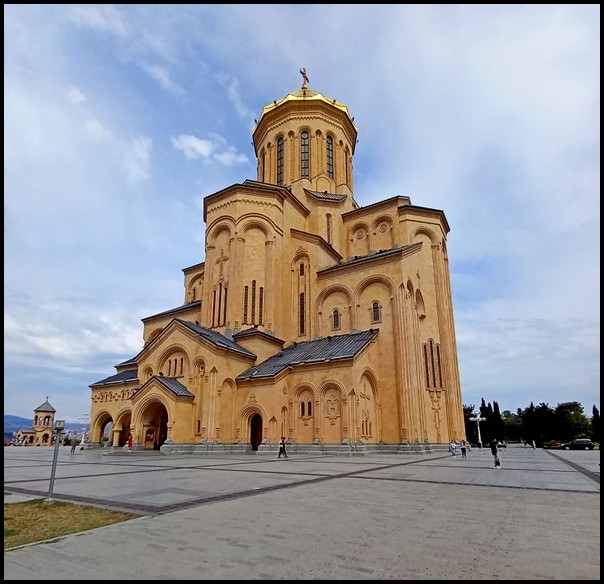
3. About 88% of Georgians are Christian
The inhabitants of the region of Georgia were under the sway of Byzantine Rome in the 300-400s AD. They adopted Byzantine Christianity in the early 300s and have kept that faith ever since.
Even today 88% of Georgians consider themselves Christian and the country is dotted with churches, both new and historic.
4. Cannabis is legal in Georgia
In 2018 Georgia legalized the possession and consumption of marijuana, both for recreational and medical purposes.
That makes Georgia one of the first countries in the world to legalize the use of cannabis. It’s also the first former Soviet country to do so.
Perhaps a bit ironically, though, large-scale cultivation and sale of marijuana is still illegal in Georgia.
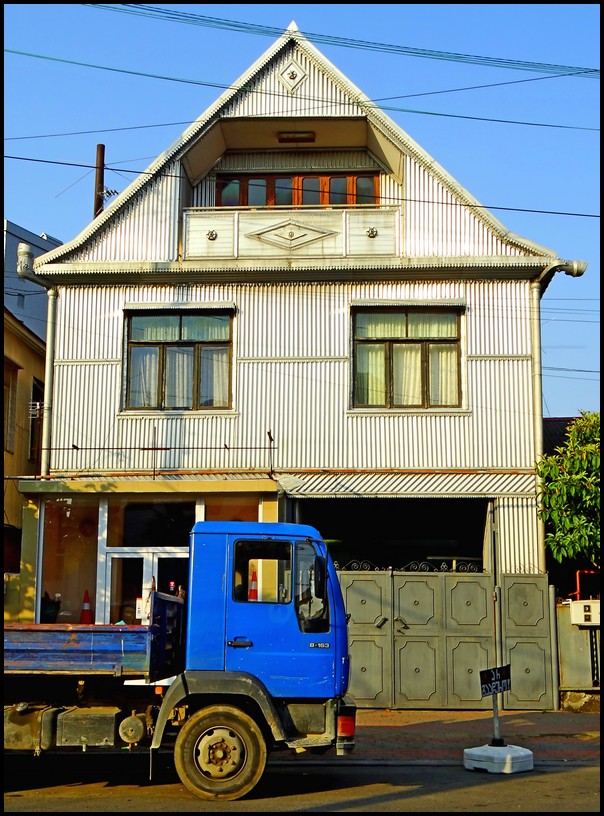
5. Georgians live in huge silvery houses
When I arrived in Georgia from Turkey, one of the first things I noticed was all the houses. They really stood out immediately to me because in Turkey almost everyone, everywhere, lives in apartment buildings. I rarely saw any stand-alone houses in Turkey, even during 12 months of living & traveling there.
In Georgia, in contrast, at least 50% of people seem to live in houses. And they are big houses. Really big, boxy houses. Often two, three, or even four generations of a family live together in these huge houses.
The most stand-out feature of Georgian houses is that they are often wrapped completly in silvery corrugated aluminum. This is the first country where I’ve ever seen a house with exterior walls of corrugated aluminum.
I’ve seen plenty of countries where houses and other buildings have roofs of corrugated aluminum (Costa Rica comes to mind). But in Georgia, many houses are totally wrapped in it, making them look silvery.
Some houses have fancy aluminum detailing and/or distinctive silver peaked crowns, much like the top ornaments on Christmas trees. These houses actually look pretty cool.
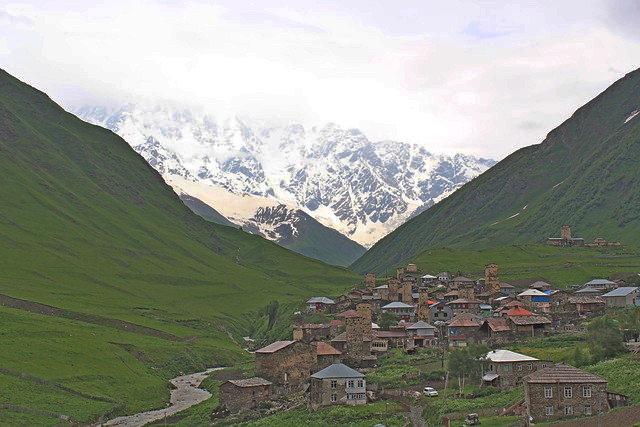
6. Mt. Shkhara, Georgia’s highest peak, is higher than all European Alps!
Georgia is primarily a mountainous country, lying almost entirely within the vast Caucus Mountains. The height and ruggedness of Georgia’s mountains varies tremendously, though. In western Georgia, along the Black Sea coast, the mountains are rather low and soft, covered in lush sub-tropical vegetation and dense forests. They are soft, rounded undulating mountains.
In contrast, Georgia’s highest peaks are located in northern Georgia along the border with Russia. In that region, many peaks exceed 4500 M / 14,800 ft and 5000 M / 16.500 ft.
Mt. Shkhara is Georgia’s highest peak, summiting at the impressive height of17, 064 ft / 5201 M. Stop a moment to consider how exceedingly high that is…
As it turns out, Georgia’s Mt. Shkhara is considerably taller than all of European’s Alps, taller than Japan’s formidable Mt. Fuji and taller than America’s highest continental mountain, Mt Whitney. Here are some stats to back this up:
In comparison, the continental USA’s highest peak, Mt. Whitmore is 4421 M / 14,505 ft. Austrian Alps are … For instance, Japan’s famous Mt. Fuji is a mere 3776 M / 12,…. ft. Mt. Blanc, which straddles France, Austria and Italy, is the highest at 4803 M / 15,774 ft.
Mt. Denali in Alaska is North American’s highest peak. It does exceed Mt. Shkhara at 20,310 ft / 6190 M.
Put in global perspective, Georgia’s Mt. Is really very impressive.
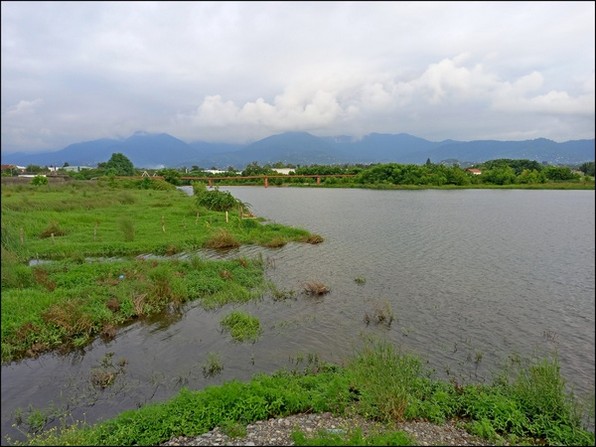
7. Some Georgian territory is below sea level
To the further extremity of altitudes, a small region of Georgia actually lies below sea level. While Georgia is primarily very mountainous and landlocked, it also has a 310 km / 190 mile long coastline along the Black Sea.
Between the coastal port city of Poti and its northern neighboring town of Kulevi, in a region just inland from the sea, the land slips below sea level to -1.5-2.3 M / -5-8 ft.
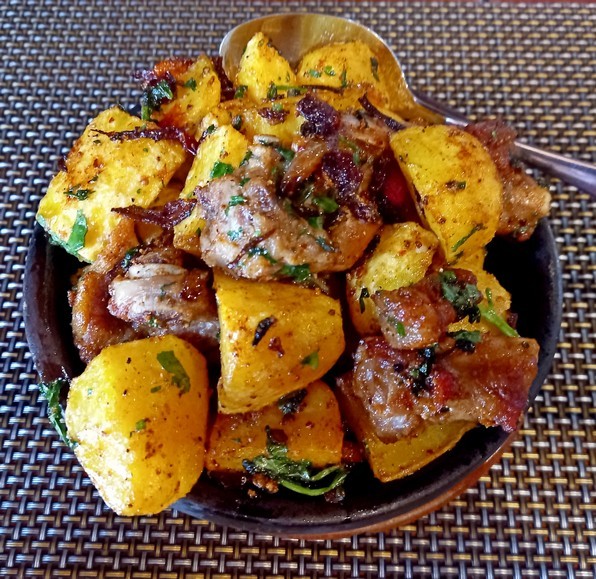
8. Georgia is one of few countries that never assimilated Ottoman culture
The great Turkish Ottoman Empire lasted 500 years and at its peak in the 1600-1700s, covered a vast swath of the region, including northern Africa, Arabian Peninsula, Balkan Peninsula and into central Asia.
Most countries that were ruled by the Ottomans for 300-400 years or more inevitably incorporated many cultural aspects of their daily lives from the Ottomans. Many countries became predominantly Muslim. Many adopted Tukish cuisine and desserts. Some incorporated clothing styles, architecture, mosques, call to prayer and/or other aspects of Ottoman culture.
In great contrast, Georgian stiffly resisted Ottoman rule and all aspects of their culture for 300 years! Georgians hung on to Christianity, their fine Orthodox churches, their own language & script, their own unique cuisine and architecture, their wine-making traditions and more. That really was quite a feat.
If you’ve visited many regional countries formerly ruled by the Ottomans, such as Albania, Egypt, Bosnia, you’ll see a very distinct difference between them and Georgia.
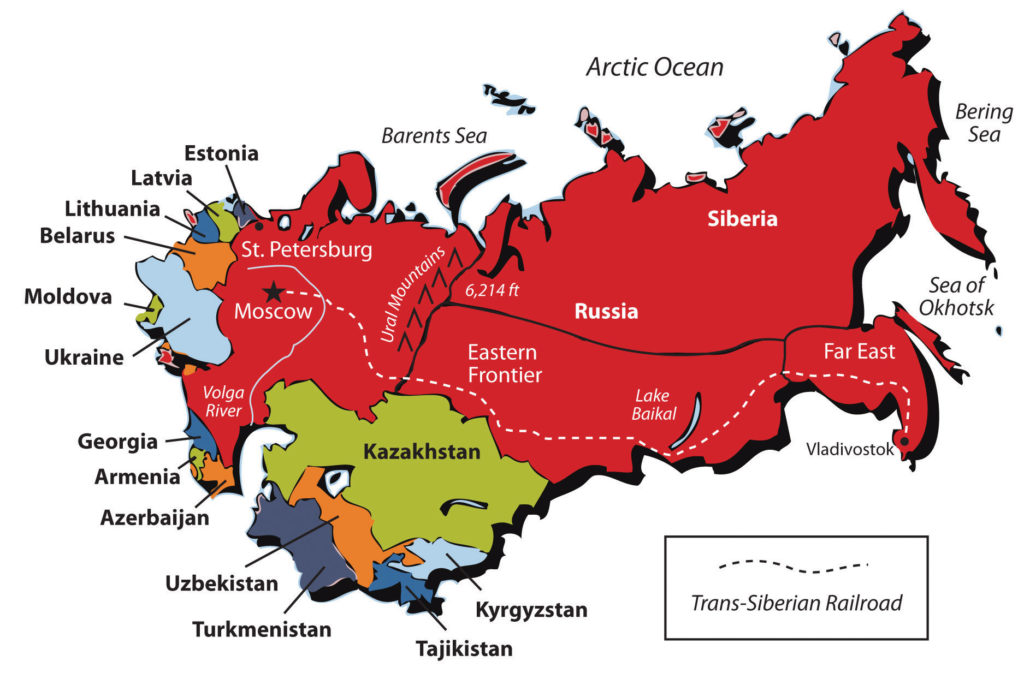
9. Georgia used to be part of Russia and then the USSR
Due to wars between Russia and the Ottoman Turks in the late 1880s, many regions of Georgia found themselves under Russian dominion. Apparently they preferred that to Turkish rule, however, it didn’t take long before their were revolts against Russian rule as well.
Unfortunately for Georgians, Russian rule prevailed through the early 1900s and through WWI and WWII. After WWII, Georgia found itself annexed to the communist USSR, once again against their will.
Their distaste for Russian domination can be attested to by the fact that Georgians drew up a draft for independence before the collapse of USSR in 1991. Soon after that, Georgia finally gained its independence and officially became the country of Georgia in late 1991.

10. Stalin was born & raised in Georgia
Considering how much Georgian’s disliked Russian rule, it’s rather ironic that communist USSR’s most prominent ruler, Josef Stalin, was born and raised in Georgia.
Gori, Georgia is situated in the middle of the country, midway between the capital city of Tbilisi and pretty Kutaisi city. Gori is famed as the birthplace of Russia’s notorious leader, Joseph Stalin, during a time when Georgia was part of Russia.
Gori has a museum dedicated to Stalin, which showcases many of his personal possessions and details his life. The small house where Stalin was born is on the museum grounds and visitors can go inside to see two rooms and personal effects.
I really wanted to go visit this town and museum to find out more about Stalin’s early life. Quite unfortunately, because I visited Georgia in August, the temperatures in Gori were around 100F / 35-39 C throughout my entire 5-week travels around the country.
Sorry, but that is just too broiling hot for me! I stayed at the – slightly – cooler Black Sea coast for four weeks out of five and only ventured inland to the capital city, Tbilisi, during my final week in Georgia.
==========================
You might also like:
Introduction to Croatia
=========================







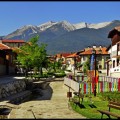



 Hi! I'm Lash, an American nomadic world traveler who's been traveling solo since 1998. I’m passionate about traveling the world nomadically and then sharing it all with you. I hope to inspire you to travel the world, to entertain you with tales from the road, and to help you reach your travel dreams. Welcome!
Hi! I'm Lash, an American nomadic world traveler who's been traveling solo since 1998. I’m passionate about traveling the world nomadically and then sharing it all with you. I hope to inspire you to travel the world, to entertain you with tales from the road, and to help you reach your travel dreams. Welcome! 




1 pings